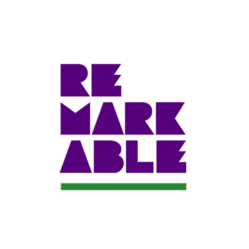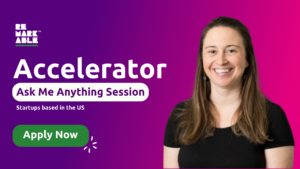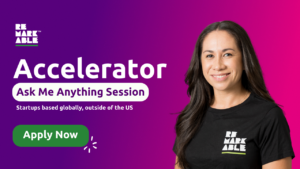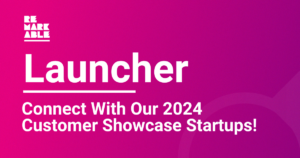We are so happy with the brilliant launch of our Remarkable Insights a few weeks ago with a Conversation on Innovation Through the Disability Lens.
Our remarkable live panel included Srin Madipalli, Founder and Investor, Product Manager at Airbnb, Professor Jackie Leach Scully, Director, Disability Innovation Institute UNSW, and Janice O’Connor, Manager for Research, Innovation & Stakeholder Engagement, Onemda.
If you missed it you can watch the full event on our YouTube Channel above and our talented #SYD20 alumni Isabelle Quigley from Neurodiversity Media created a visual scribe of the key points from the discussion that you can check out below.

Pete Horsley, our Founder took the time to write a blog post based on some insights provoked by the voices in the conversation, check it out!
________
Designing the Future Now
By Pete Horsley, Founder of Remarkable

Marketing to 100-Year-Olds is a fascinating article by technology leader and Forbes writer Shama Hyder on how Stanford University is looking at what happens to society when everyone starts living to 100 and the impact that will have on keeping people physically fit, financially independent and with good mental acuity.
On a long enough timeline every single one of us will think products that enable accessibility will be of utmost importance. Granted the personal reality of ageing is staved every now and then when that one 94-year-old extremely limber dancer busting out some hip gyrating moves, or that 80-year-old marathon runner who survives on a diet of red wine and dark chocolate, pops up on your news feed, but physical and intellectual impairments are a reality for all of us who are fortunate enough to live beyond 80 years of age and it may even be a reality much younger than that.
Our good friend from Ireland, Noel Joyce, who has had almost a decade growing hardware startups across the globe, sees it differently – he said “[What if] we can use the knowledge of disabled people today to understand all of our challenges of tomorrow?”
Srin Madipalli (Co-Founder of Accomable – acquired by Airbnb) spoke recently about providing for the needs of people with disability is a great proxy for designing efficient labour-saving products and services. While one is a game-changer for someone with limited mobility, for example, it is by its nature benefits all other users as well.
In other words, what if we have a living lab available to us right here, right now who are our best futurists? What difference would that make to the way we design our smart cities or create our workplaces and homes of the future? How would we alter product and service design? What if all designers start to think about designing for their future selves – because there is no escaping disability as we age?
A couple of years ago I was approached by one of the largest residential developers from Thailand who asked about what relevant technologies we had access to that he could build into his new developments to allow someone to “age in place”. He gets it. He sees this intersection between disability and ageing.
So what are we waiting for?
We need to start now.
Smart city planners need to be designing for this.
Corporate organisations need to be designing for this.
Product designers need to be designing for this.
A few months ago I was conversing with a colleague Angela who is living with cerebral palsy and she mentioned she had an idea that would fix the problem she currently faces of not being able to cross the street independently because she can’t push the button with her hands. She asked why we couldn’t have a foot button as well.
It reminded me of this very accessible door opener at the Getty Museum in Los Angeles that allowed anyone to open the door by pushing on any part of the long button. Such a small change – and yet this would be accessible by more people (think: parents holding a baby and a pram, or someone who is carrying far too much shopping) and give Angela the ability to travel autonomously.

Angela is our expert in residence. She is the key to designing for the future. The issue is, that Angela often doesn’t have a voice in these conversations and there is no doubt in my mind that we are all worse off because of it.
Each month we host Remarkable Insights – a 45-minute webinar with guest panelists discussing how to bring the inclusive future into the now. Join in the next conversation, or re-watch the previous episode. #RemarkableInsights



